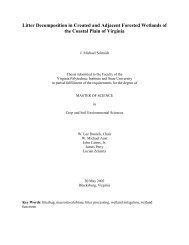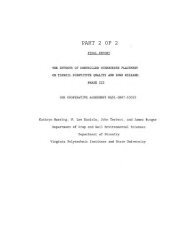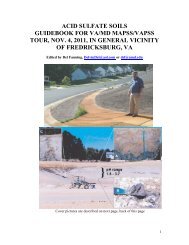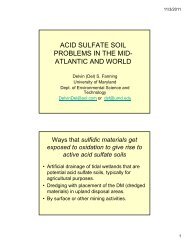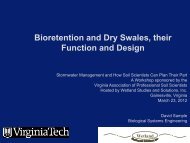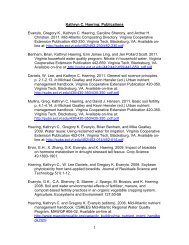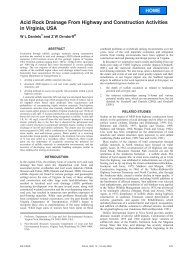Remediation of PAH-Contaminated Soils and Sediments: A ...
Remediation of PAH-Contaminated Soils and Sediments: A ...
Remediation of PAH-Contaminated Soils and Sediments: A ...
You also want an ePaper? Increase the reach of your titles
YUMPU automatically turns print PDFs into web optimized ePapers that Google loves.
Jonsson et al. (2006) used both Fenton’s reagent <strong>and</strong> ozonation on nine samples<br />
from five different contaminated sites <strong>and</strong> found that Fenton’s reagent was<br />
generally more efficient in degrading <strong>PAH</strong>s than ozone treatment. Fenton’s<br />
reagent removed 40-86% <strong>of</strong> the initial <strong>PAH</strong>s, as opposed to 10-70% removal by<br />
ozone oxidation. Ozonation was more effective in degrading LMW <strong>PAH</strong>s than<br />
HMW <strong>PAH</strong>s, while Fenton’s reagent removed <strong>PAH</strong>s <strong>of</strong> all weights. However,<br />
most researchers have found that the oxidation rate <strong>of</strong> LMW <strong>PAH</strong> compounds by<br />
Fenton’s reagents is generally higher than that <strong>of</strong> HMW <strong>PAH</strong>s (Wilson <strong>and</strong><br />
Jones, 1993). Some exceptions to this are anthracene <strong>and</strong> benzo[a]pyrene,<br />
possibly due to their high reactivity towards hydroxyl radicals (Lundstedt et al.,<br />
2006). Both Nam et al. (2001) <strong>and</strong> Flotron et al. (2005) found that<br />
benzo[a]pyrene was more easily oxidized by Fenton’s reagent than many smaller<br />
<strong>PAH</strong> compounds, probably due to its lower oxidation potential.<br />
64



